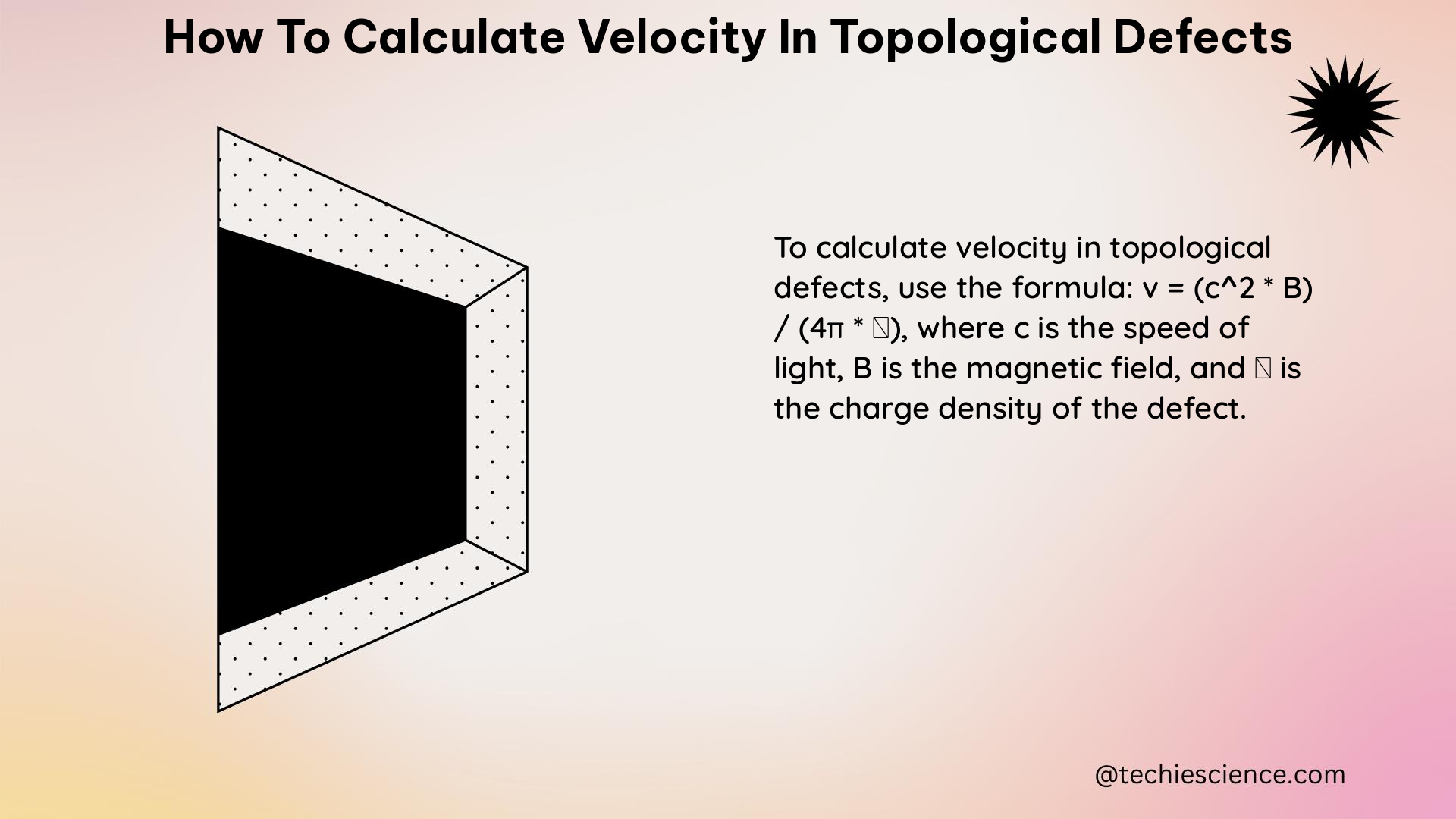Calculating the velocity of topological defects is a crucial aspect in understanding the dynamics of various systems, from liquid crystals to active matter. This comprehensive guide will provide you with the necessary tools and formulas to accurately determine the velocity of topological defects in your research.
Dynamical Theory of Topological Defects
The dynamics of topological defects can be described by solving the equation of motion for the orientation field θ with appropriate boundary conditions at the defect cores. The equation of motion for the defect velocity can be expressed as:
$$\frac{\partial \mathbf{p}}{\partial t} = \mathbf{a}(t) \frac{\partial \mathbf{z}}{\partial t}$$
where $\mathbf{p}$ is the defect position, $\mathbf{a}(t)$ is the time-dependent activity profile, and $\mathbf{z}$ is the complex coordinate.
The defect reorientation time $\tau$ and the rotational and translational defect mobilities $\mu$ can be calculated using the following formulas:
$$\tau = \frac{1}{\Gamma} \quad \text{and} \quad \mu = \frac{1}{\eta}$$
where $\Gamma$ is the rotational friction coefficient and $\eta$ is the viscosity of the medium.
Velocity Distribution of Topological Defects

The velocity distribution of topological defects can be computed by examining the dynamics of the defects in different models and comparing them with experimental data. This can be done by considering the activity profile $\rho(\mathbf{r})$ and the defect density $n(\mathbf{r})$, which can be expressed as:
$$\rho(\mathbf{r}) = \rho_0 \exp\left(-\frac{\mathbf{r}^2}{2\sigma^2}\right) \quad \text{and} \quad n(\mathbf{r}) = n_0 \exp\left(-\frac{\mathbf{r}^2}{2\sigma^2}\right)$$
where $\rho_0$ and $n_0$ are the maximum values of the activity profile and defect density, respectively, and $\sigma$ is the characteristic length scale.
Defect Transport and Surfing
In active fluids, topological defects can be collectively transported by moving active strips. The transport efficacy is quantified by the total number of defects that leak out of the strip and the net horizontal polarization of all the defects. The optimal transport occurs at intermediate speeds where few defects are left behind and the defects develop significant collective polarization.
Equations of Motion
The velocity of topological defects can be calculated using the equations of motion, which involve the defect reorientation time, rotational and translational defect mobilities, and the activity profile of the system. These equations can be used to predict the dynamics of defects in various systems.
Collective Transport
The collective transport of active defects can be achieved by using active topological tweezers, which create spatial activity gradients that act like electric fields, inducing an inverted topological polarization of defects. This technique allows for the controlled manipulation and transport of topological defects.
Energy and Velocity
Topological defects carry energy, which leads to an extra attractive force. The velocity of these defects can be calculated using the equation of motion, which involves the energy and the defect velocity. This relationship between energy and velocity is an important consideration in understanding the dynamics of topological defects.
Conclusion
By understanding the dynamical theory of topological defects, the velocity distribution, defect transport, equations of motion, collective transport, and the relationship between energy and velocity, you can accurately calculate the velocity of topological defects in your research. This comprehensive guide provides the necessary tools and formulas to help you navigate this complex field of study.
References
- Dynamical Theory of Topological Defects II: Universal Aspects of Defect Dynamics:
-
https://iopscience.iop.org/article/10.1088/1742-5468/ad2ddb
-
Defects in Active Nematics – Algorithms for Identification and Tracking:
-
https://arxiv.org/pdf/2002.02748
-
Design Rules for Controlling Active Topological Defects:
-
https://www.ncbi.nlm.nih.gov/pmc/articles/PMC11127047/
-
Topological Defects and Structure Formation:
- https://www.physics.mcgill.ca/~rhb/sample/topdefect.pdf

The lambdageeks.com Core SME Team is a group of experienced subject matter experts from diverse scientific and technical fields including Physics, Chemistry, Technology,Electronics & Electrical Engineering, Automotive, Mechanical Engineering. Our team collaborates to create high-quality, well-researched articles on a wide range of science and technology topics for the lambdageeks.com website.
All Our Senior SME are having more than 7 Years of experience in the respective fields . They are either Working Industry Professionals or assocaited With different Universities. Refer Our Authors Page to get to know About our Core SMEs.